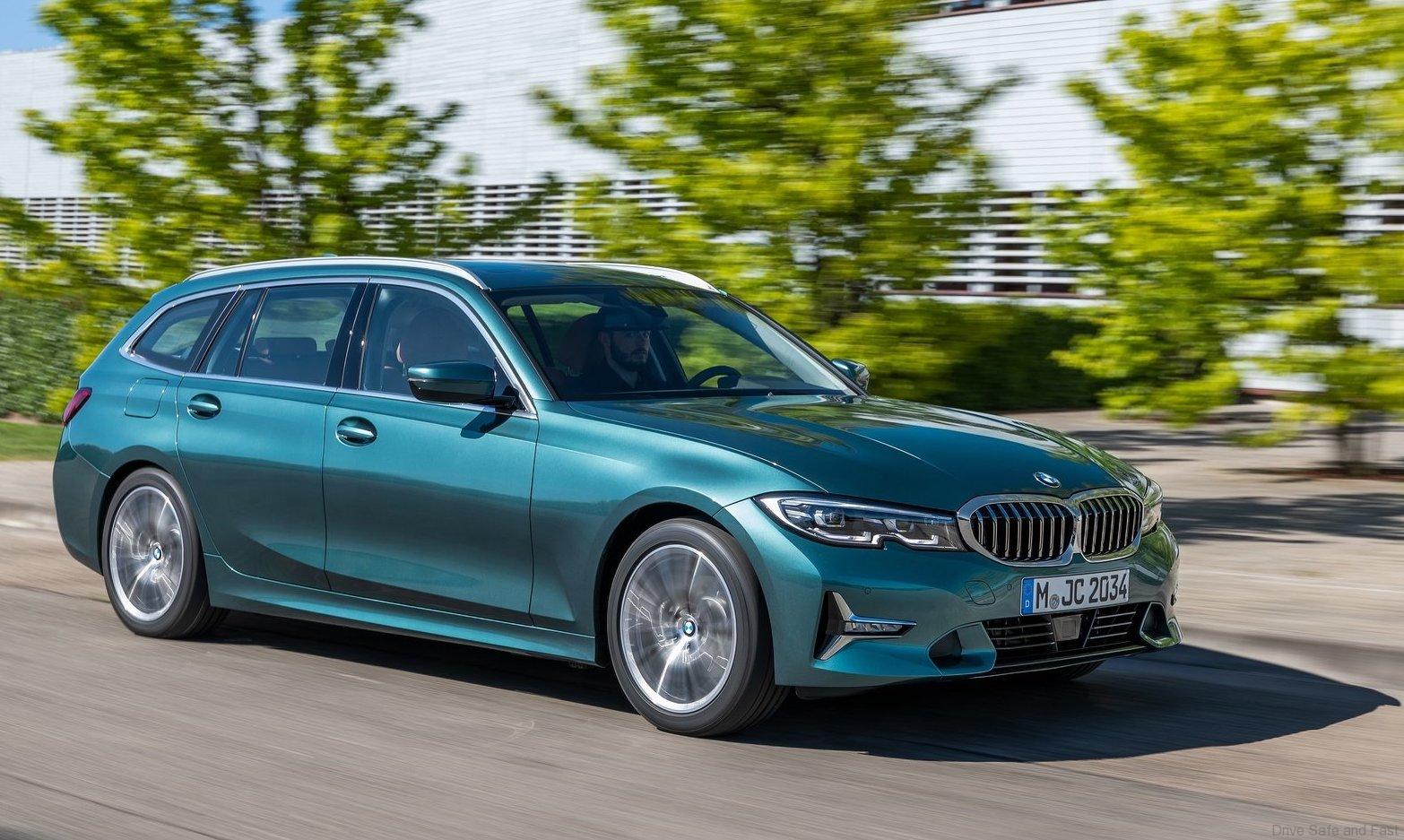Malaysians love to buy SUV’s and Crossovers, but name the vehicle a wagon/estate/statiowagon/ touring and they do not even bother to test drive it.
Yes, there is a hidden stigma against the names and the fact that the wagon/estate/statiowagon/touring sits close to the ground just like a car. But give a little ride height like with the BMW X1 and BMW X2 and buyers will be eager to own one. Fact, every SUV or Crossover is actually a wagon/stationwagon/estate/touring with a higher ride height.
Now comes a new BMW 3-Series wagon/touring after 32 years of the first ever BMW 3-Series Touring, the latest generation of the sporty estate is poised on the start line.
Latest generation engines and new chassis technology provide a noticeable increase in sporting prowess, while intelligent equipment features optimise versatility both in everyday use and on trips away. The advances made in these core disciplines join with the BMW 3-Series Touring’s dynamic take on the new BMW design language, the extensively refined premium ambience of its interior and the latest innovations in control/operation and connectivity to define the character of the new car.
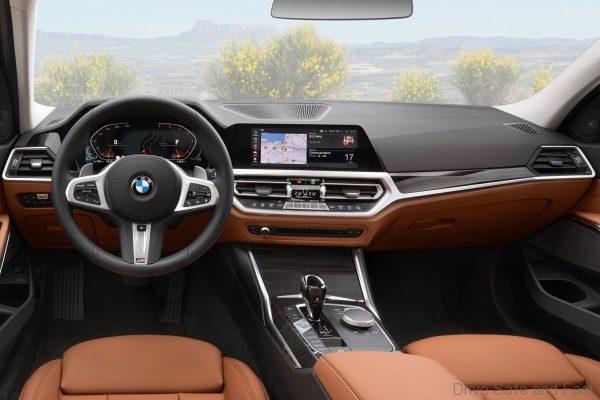
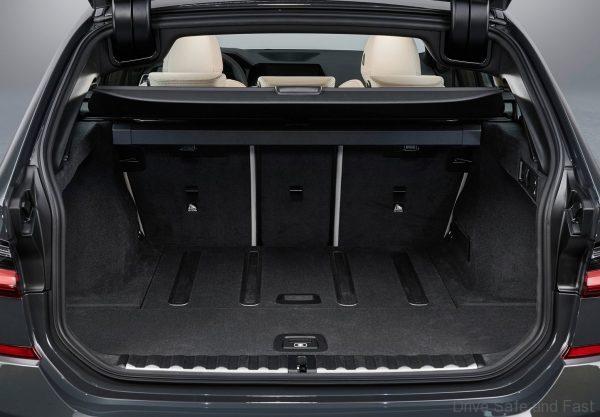
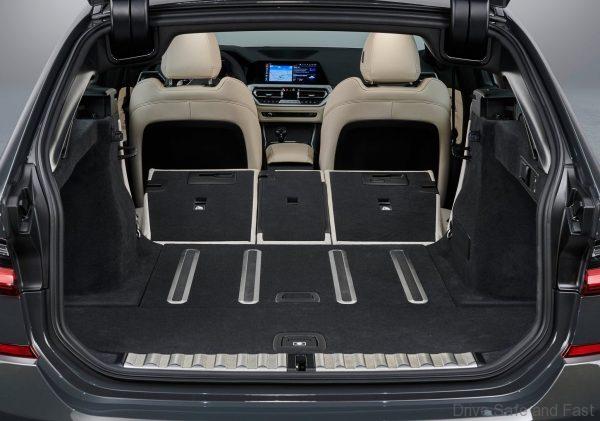
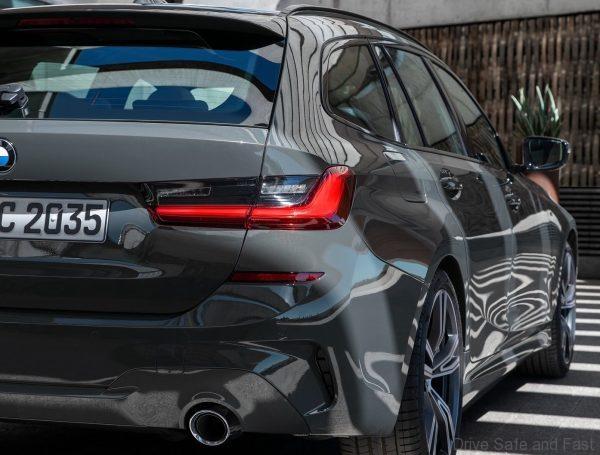
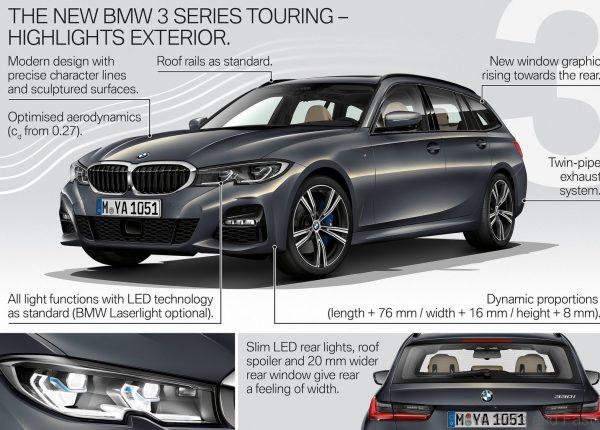
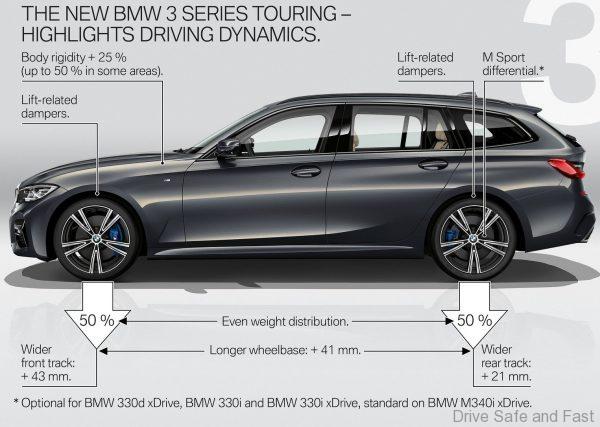
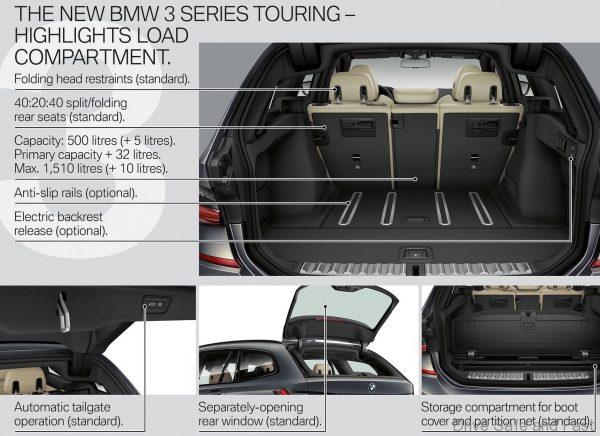
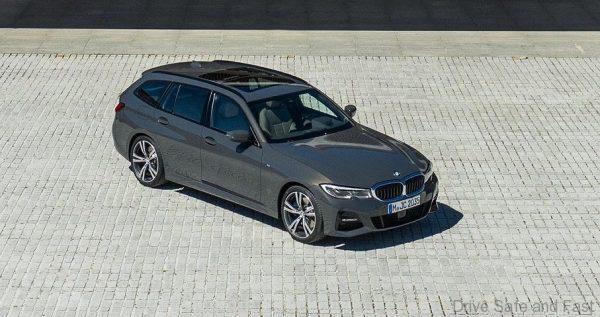
Press Release: The original BMW 3-Series Touring presented in 1987 fulfilled this brief in spectacular style, its extended roofline, large tailgate and resultant increase in interior space adding significantly greater functionality to the agile handling familiar from its sedan sibling. BMW now had a new breed of car on its hands, the BMW 3-Series Touring blazing a trail for versatile yet handsome five-door models in the premium midsize class and continuing to set the benchmark for sporty driving characteristics (in what soon became a hotly contested market segment) to the present day. More than 1.7 million examples of the 3-Series Touring have since hit the roads, with the new car’s immediate predecessor alone accounting for over 500,000 of these.
Dynamic Touring Proportions
The exterior proportions of the new model generation inject more dynamism than ever into the traditional BMW 3-Series Touring blueprint. The new BMW design language uses crisp lines and strikingly contoured surfaces to provide a clear and authentic showcase for the car’s sporting character. Larger exterior dimensions than its predecessor give the new BMW 3-Series Touring – which has grown by 76 millimetres to 4,709 millimetres in length, by 16 mm to 1,827 mm in width and by 8 mm to 1,470 mm in height (incl. roof fin) – a dynamically stretched silhouette, a powerful stance and increased presence. A wheelbase extended by 41 mm to 2,851 mm, plus large tracks (front: 1,573 mm, rear: 1,569 mm), contribute directly to the car’s poised and agile handling.
The design of the front end likewise fuels the sporting aura of the new BMW 3-Series Touring. It matches the nose of the new BMW 3-Series Sedan, and is headlined by a large BMW kidney grille, slim twin headlights and an elaborately jutting front apron, which team up to accentuate the width of the car. The two elements of the BMW kidney grille are framed by a single surround and split up by wide bars. The headlight units extend all the way up to the grille and use their four light sources to generate the signature BMW road-focussed stare. This familiar look is further emphasised by an eye catching notch in the front apron that rises up into the headlight unit contour. Full-LED headlights come as standard for the new BMW 3-Series Touring, while LED headlights with extended features and U-shaped daytime driving lights are available as options.
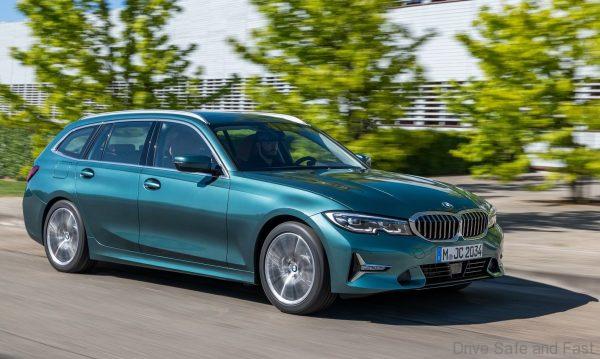
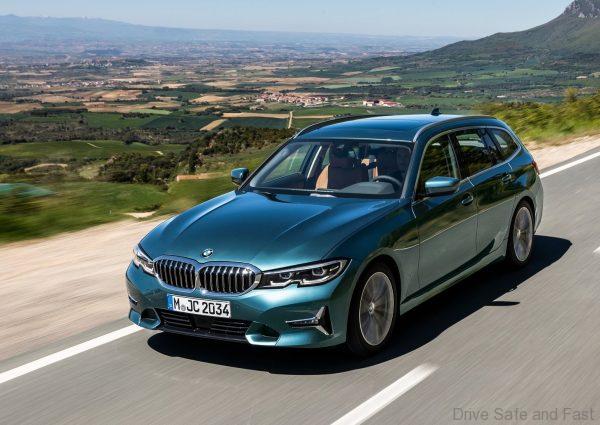
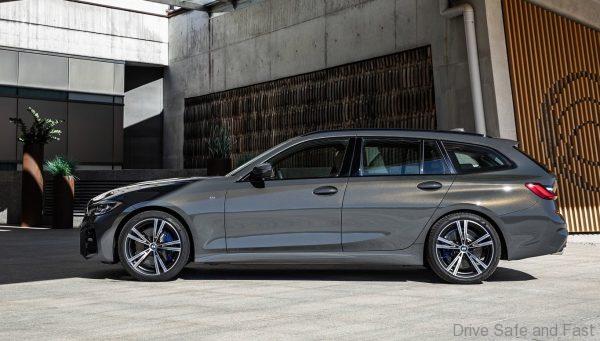
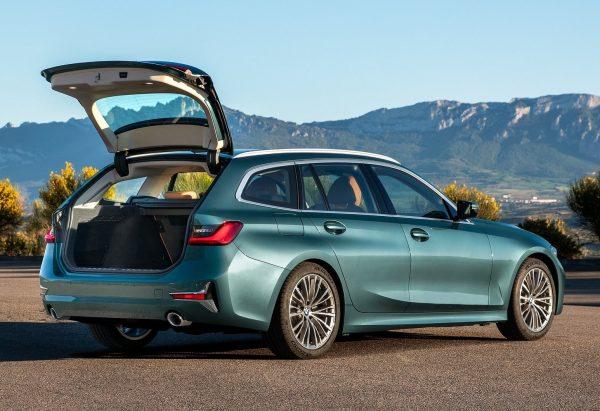
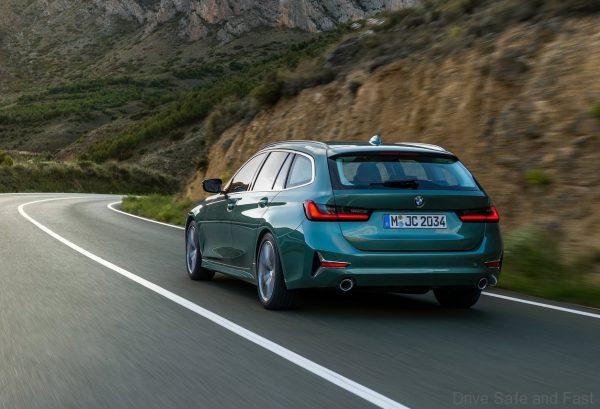
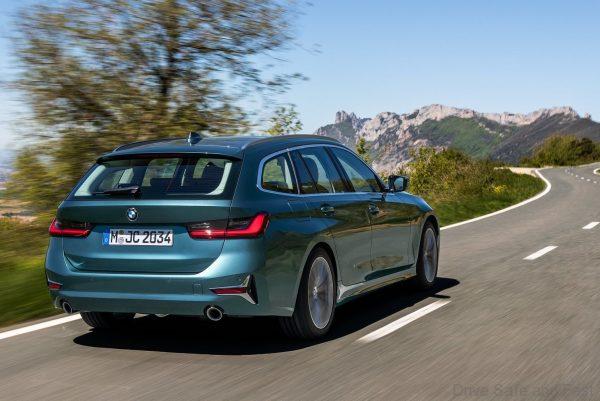
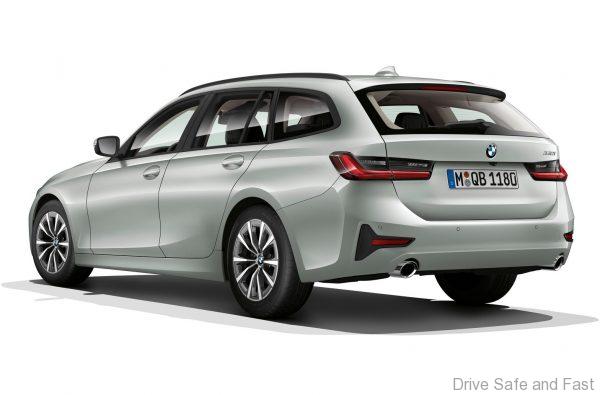
The bonnet of the new BMW 3-Series Touring is shaped by four contour lines searing towards the kidney grille. At its leading edge, it sits flush with the upper line of the headlights and kidney grille. The car’s muscular stature is emphasised by the generously-proportioned, modern surfacing of the front apron. Both the optional LED foglamps and the Air Curtains are integrated into the outer air intakes, which are inserted into the front apron in a horizontal T shape on cars with standard specification and on Sport Line / Luxury Line models. This design was originally developed by the National Advisory Committee for Aeronautics (NACA) for the intake air in jet engines and later became a feature of classical racing cars.
A strikingly dynamic interpretation of the classical Touring lines marks out the redesigned flanks of the new car. Central to the fresh look alongside the long bonnet, short overhangs and long wheelbase is the extended roofline. It is an impression reinforced by the interplay of roofline and side window graphic. The prominent rise in the lower window surround above the rear wheel creates space for a powerfully formed and clearly defined shoulder area, which gives the rear section of the flanks a distinctive appearance. Added to which, a character line climbing from the front side panel, along the doors and into the rear teams up with the rearwards-descending roofline to create a dynamic wedge shape that embodies the car’s forward-surging intent.
The converging lines also dictate the contour of the Hofmeister kink (the familiar counter-swing at the trailing edge of the side window graphic), imbuing it with an even sharper dynamic edge. Both the B-pillars and C-pillars feature aluminium trim. Plus, all the sealing around the side windows is capped with aluminium elements, further heightening the feeling of class encapsulated by the side view as a whole.
Roof rails are also part of standard specification for the new BMW 3-Series Touring.
Another feature of the new BMW design language is the flowing transition from the flanks of the car into the rear end. An additional model-specific character line running from the rear door handles into the rear lights and extending along the tailgate’s handle strip, together with the pronounced tapering of the passenger cell above the rear wheel arches, underlines the modern effect of these sculptured surfaces.
The rear of the BMW 3-Series Touring emulates its Sedan sibling with an eye-catching spoiler lip which, like the slender rear lights, extends well into the flanks of the car. The rear window is around 20 millimetres wider than on the outgoing model and now extends beyond the water run-off strips on either side of the boot opening. The prominent roof spoiler, further horizontal lines and the L-shaped taillights of the stylishly darkened light units give the rear of the car a wide and dynamic stance. All of the light functions use LEDs as standard. On standard-specification cars, plus Sport Line and Luxury Line models, the T-shaped apertures in the rear apron – which frame the reflectors – mimic elements of the front-end design. Elsewhere, the tailpipes from the exhaust system (a dual-pipe affair on all model variants) have a diameter of 80 or 90 millimetres, depending on the engine fitted, and enrich the car’s undeniably sporty appearance. The new BMW 3-Series Touring also comes as standard with a load sill cover in stainless steel.


